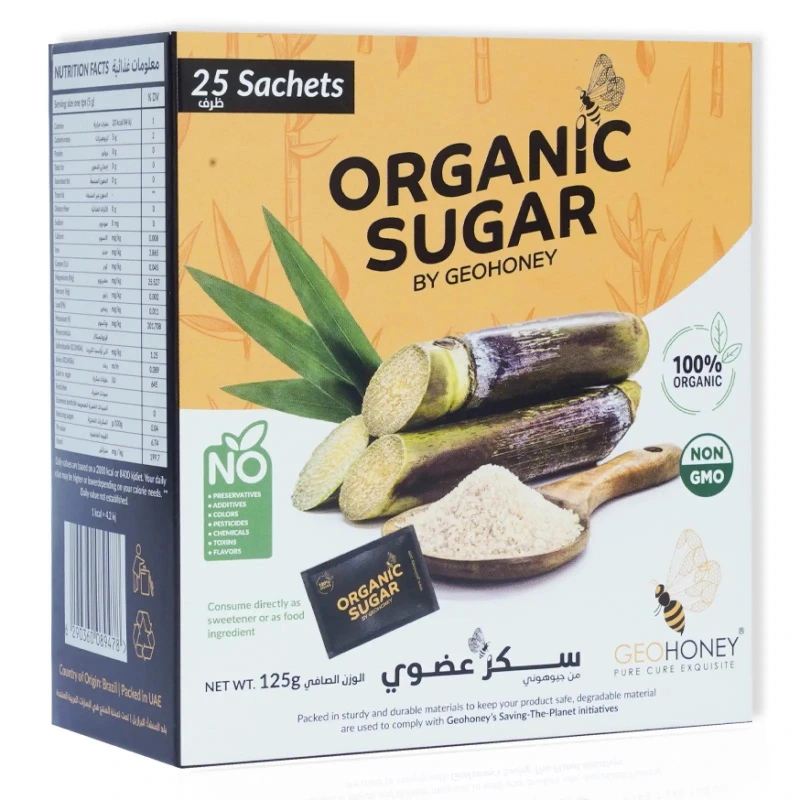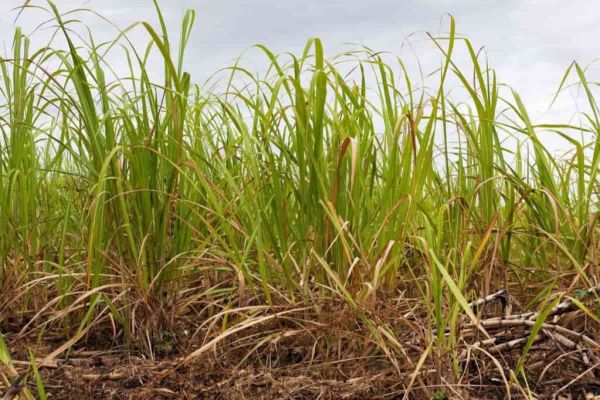Comprehending the Diverse Roles of Sugar Cane in Farming and Production
Sugar Cane plays a vital function in both agriculture and production. As a significant cash plant, it affects economies in exotic regions. Its versatility expands beyond sugar manufacturing to biofuels and biodegradable products. Furthermore, sugar Cane farming promotes dirt health and wellness and biodiversity. Nevertheless, the complete extent of its payments and possible in lasting methods remains to be discovered. What innovative procedures could improve its role in future agricultural systems?
The Agricultural Relevance of Sugar Cane
Sugar Cane plays a necessary function in farming, contributing significantly to the economies of many tropical and subtropical regions. This yard varieties thrives in warm climates, needing enough sunlight and water, making it a perfect plant for these locations. Sugar Cane is primarily cultivated for its high sucrose material, which offers as a vital basic material for sugar production. In addition, it plays a considerable duty in dirt preservation by preventing disintegration and enhancing soil fertility through its growth cycles. Sugar walking stick's comprehensive origin system help in water retention, profiting bordering plants. The crop sustains regional environments by supplying habitat and food for numerous wild animals types. Farmers commonly incorporate sugar Cane into plant turning systems, improving biodiversity and agricultural resilience. The cultivation of sugar Cane not just satisfies local food demands yet also cultivates lasting agricultural practices, advertising long-lasting ecological health and wellness in farming neighborhoods.
Economic Payments of Sugar Cane Cultivation
Sugar Cane is frequently overlooked, its financial payments are considerable, particularly in creating countries where it offers as a vital money crop. The growing of sugar Cane generates significant earnings for numerous farmers, supplying livelihoods and promoting country development. As a versatile crop, it sustains different industries, including sugar manufacturing, biofuels, and drugs, subsequently stimulating local economic situations.
Furthermore, sugar Cane farming promotes work production in farming industries, refining centers, and transportation networks. It additionally adds to fx revenues through exports, enhancing national financial stability. In areas such as Brazil and India, sugar Cane plays a crucial role in agricultural exports, strengthening trade balances.
Furthermore, the plant's byproducts, like bagasse and molasses, provide additional financial possibilities, made use of in power generation and animal feed. For this reason, the financial influence of sugar Cane expands beyond plain cultivation, influencing wider commercial and farming landscapes.
The Refine of Sugar Manufacturing From Walking Cane

The trip from sugar Cane to polished sugar includes several key stages that highlight the complexity of sugar manufacturing. Fully grown sugar Cane stalks are gathered and carried to processing facilities. What Is Sugar Cane Used For. The Cane is after that crushed to extract juice, which has a high focus of sucrose. This juice goes through information, where impurities are gotten rid of, usually using lime and warmth
Next, the clarified juice is vaporized to concentrate the sugar web content. The resulting syrup is then based on formation, allowing sugar crystals to create. These crystals are separated from the remaining syrup with centrifugation and washed to get rid of any residual molasses.
The last stage includes refining, where sugar crystals are further cleansed and blonde, leading to the white granulated sugar typically made use of in food. This precise procedure underscores the intricate trip from raw Cane to the sugar that plays a vital duty in various cooking applications.
Sugar Cane as a Source of Biofuels
As rate of interest in eco-friendly energy sources grows, sugar Cane has actually arised as a considerable prospect for biofuel manufacturing. The plant's high sugar content allows efficient fermentation processes, transforming sugars right into ethanol. This biofuel functions as an eco-friendly alternative to fossil fuels, lowering greenhouse gas emissions and advertising energy sustainability.
Countries like Brazil have actually lengthy made use of sugar Cane for ethanol, developing extensive production framework that supports both domestic power demands and international export. The cultivation of sugar Cane for biofuel has additionally created economic chances, especially in country locations, where it generates employment and supports local agriculture.
Sugar Cane biofuels can be integrated right into existing gas systems, making them a practical solution for changing away from typical power sources. As technological advancements remain to boost manufacturing performance, sugar walking cane's duty in biofuel growth is positioned to broaden, better adding to worldwide efforts towards sustainable energy fostering.
Ingenious Uses Sugar Cane in Biodegradable Plastics
A growing variety of manufacturers and scientists are checking out innovative uses sugar Cane in the manufacturing of naturally degradable plastics. Sugar cane, abundant in sucrose, can be processed to develop polylactic acid (PLA), a biopolymer that acts as an option this hyperlink to petroleum-based plastics. This bioplastic can be utilized in numerous applications, consisting of product packaging, disposable flatware, and agricultural movies.
The use of sugar cane-derived PLA offers several advantages, such as minimized dependence on nonrenewable fuel sources and the capacity for lower carbon exhausts throughout production. Additionally, sugar cane's renewable nature makes it an appealing option in the quest for sustainable materials. Current developments in processing techniques have actually improved the performance and cost-effectiveness of generating these bioplastics, promoting better adoption in the industry. As the demand for eco-friendly services expands, sugar Cane stands out as an important resource in the shift in the direction of greener manufacturing practices.
Environmental Benefits of Sugar Cane Farming

Additionally, sugar Cane needs less water contrasted to various other plants, making it suitable for cultivation in deserts. Efficient usage of plant deposits, such as bagasse, can decrease waste and give eco-friendly energy sources. Additionally, sugar Cane farming can assist in the facility of agroforestry systems, developing a collaborating partnership in between trees and plants. These techniques not just shield the setting however likewise promote lasting farming techniques, eventually profiting regional areas and communities.
The Future of Sugar Cane in Sustainable Practices

Additionally, the possibility for sugar Cane to add to renewable energy resources is acquiring traction. Biofuels originated from sugar Cane can significantly reduce carbon discharges compared to fossil fuels, straightening with worldwide climate goals. Furthermore, improvements in waste monitoring permit the application of byproducts, better decreasing ecological effect.
Research into drought-resistant sugar Cane varieties is also underway, supplying strength against climate change. As stakeholders throughout the market accept these sustainable techniques, sugar Cane is positioned to play an important role in cultivating farming sustainability, ensuring its importance in future markets and adding favorably to ecological look here equilibrium.

Often Asked Questions
Just How Does Sugar Cane Affect Dirt Wellness and Fertility?
The impact of sugar Cane on soil health and fertility is significant. Its substantial origin system boosts dirt framework, while raw material from decaying leaves contributes vital nutrients, advertising general fertility and sustaining diverse microbial life.
What Are the Labor Problems for Sugar Cane Workers?
Labor problems for sugar Cane workers vary commonly, commonly identified by lengthy hours, low salaries, and dangerous environments. Numerous face challenges such as absence of accessibility to health care and inadequate protective procedures against dangerous conditions.
Can Sugar Cane Be Expanded in Non-Tropical Environments?
Sugar Cane typically prospers in tropical climates as a result of its warm and humidity requirements. Certain non-tropical areas may efficiently cultivate it via certain agricultural techniques, though yields and top quality may be substantially minimized.
What Pests Frequently Threaten Sugar Cane Crops?
Parasites threatening sugar Cane crops consist of the sugarcane borer, aphids, and nematodes. These organisms can greatly affect crop yield, demanding efficient pest administration strategies to ensure healthy growth and take full advantage of agricultural efficiency.
Just How Does Sugar Cane Cultivation Influence Local Communities?
The growing of sugar Cane significantly influences local neighborhoods by giving job opportunity, boosting economic development, and affecting social frameworks. Furthermore, it can cause websites ecological difficulties, influencing farming practices and area health in the region.
Sugar Cane is largely cultivated for its high sucrose material, which offers as a crucial raw material for sugar production. Farmers commonly integrate sugar Cane into plant turning systems, boosting biodiversity and farming strength. The trip from sugar Cane to polished sugar involves several essential stages that highlight the complexity of sugar production. The final phase entails refining, where sugar crystals are more detoxified and blonde, resulting in the white granulated sugar generally made use of in food items. The plant's high sugar web content enables efficient fermentation procedures, transforming sugars right into ethanol.